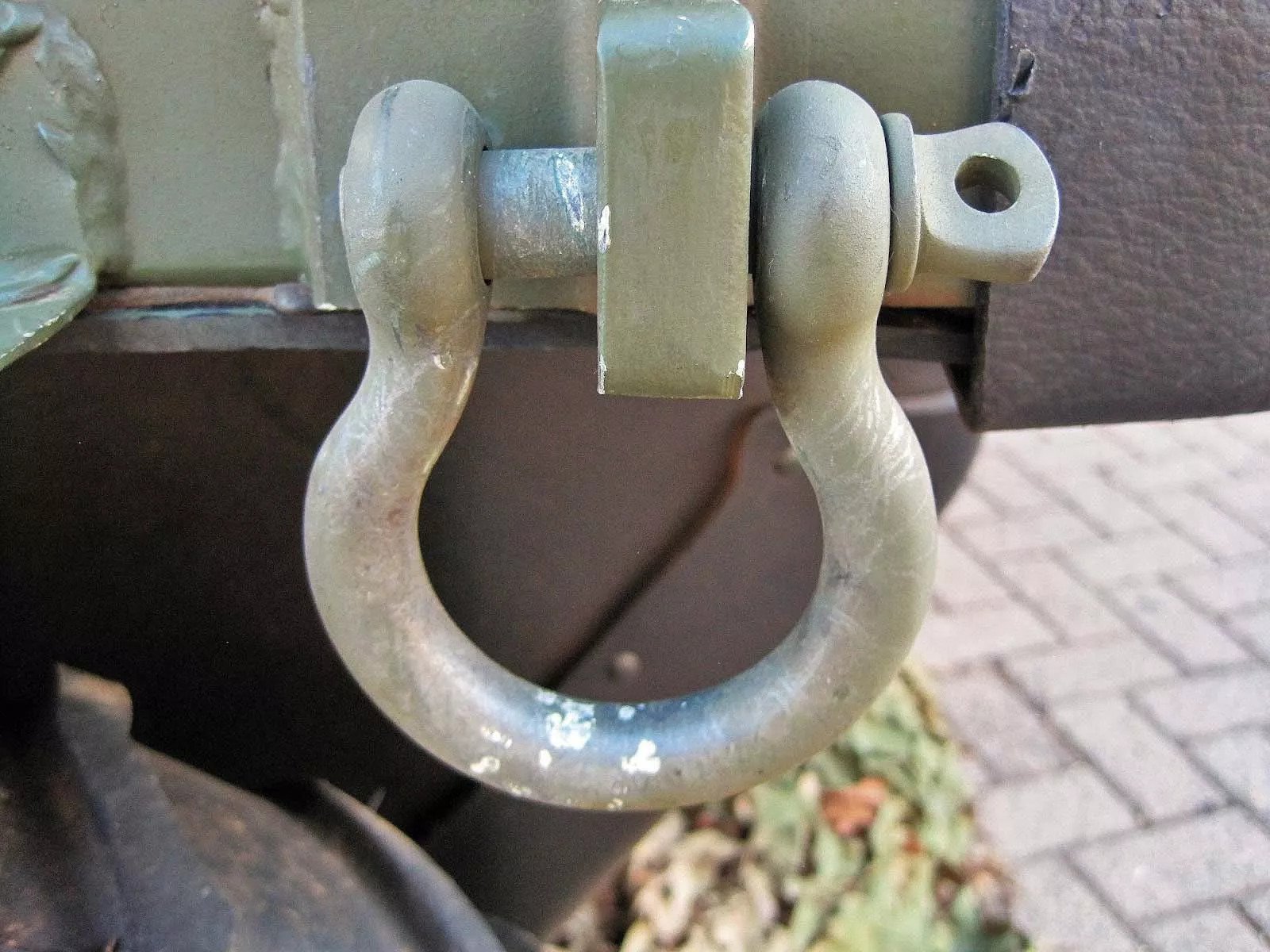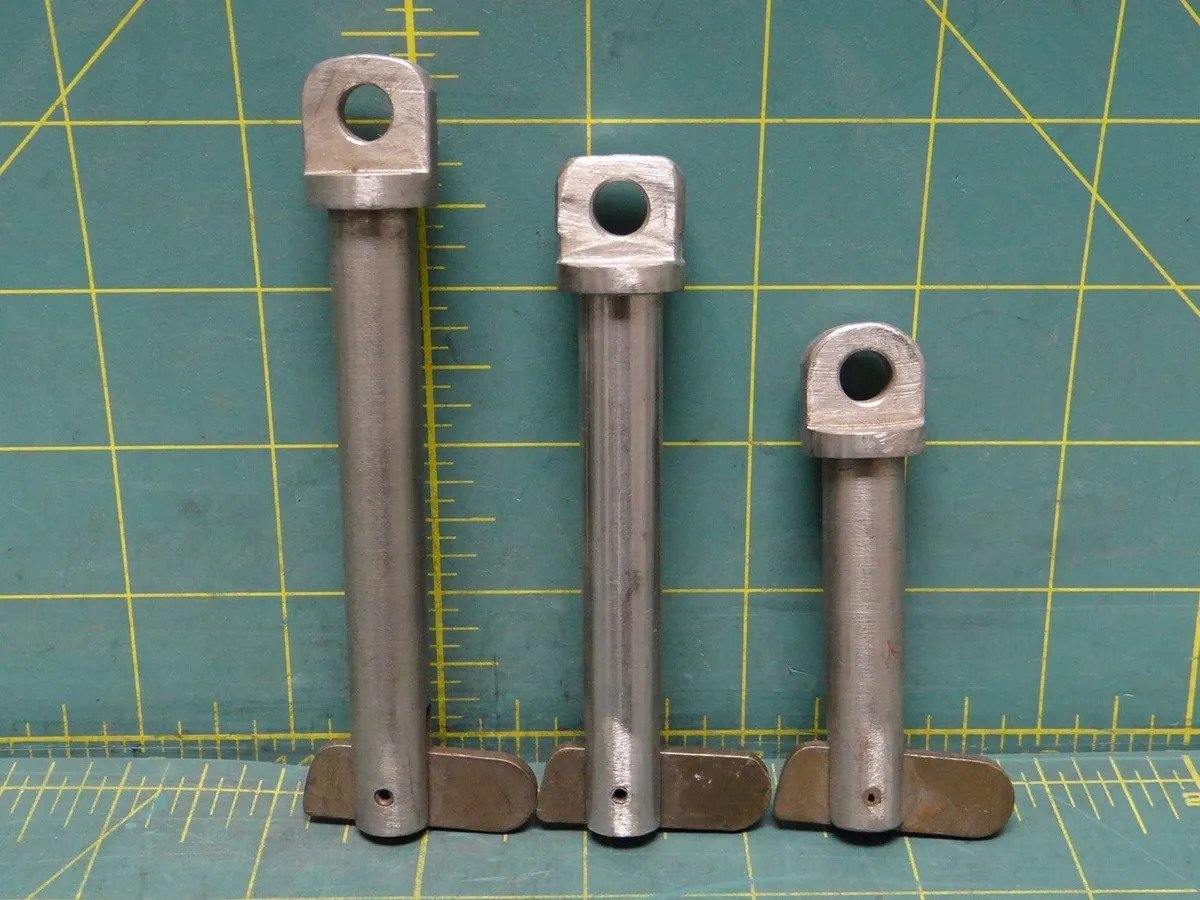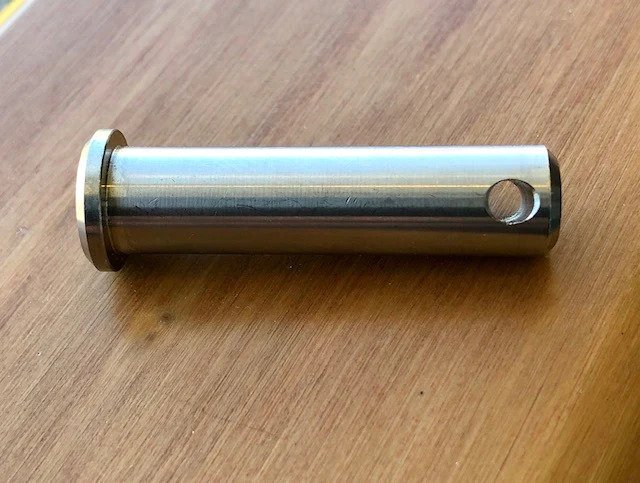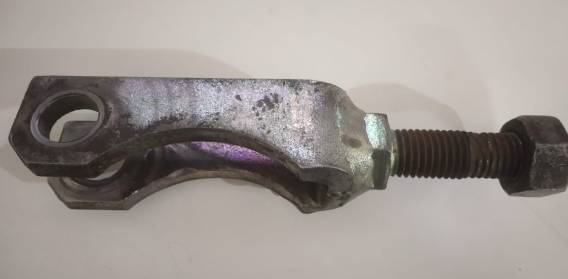
Whenever you think about fasteners in engineering and everyday use, you probably first consider bolts and screws. However, describing fasteners means much more than just bolts, screws, and co. You have a broad range of other options available for you, all of which provide different benefits.
One such option is the clevis fastener – a product that is incredibly versatile and flexible, and which works to help fasten several products across several scenarios. So, what really is the clevis fastener, and why has it become so popular?
What Is A Clevis Fastener?

Defining Clevis Fasteners
To start with, what is a clevis fastener?
Known to some as clevis bolts or clevis pins, clevis fasteners are simple, effective mechanical fasteners that offer functionality across multiple industries and applications.
The major point for clevis fasteners is to offer a secure, convenient way to create connections and pivot points that require frequent assembly or adjustment. With their design, they make it easier to maintain and adjust different applications, thus making them incredibly important for different industries.
Generally, clevis fasteners consist of three major components:
The Clevis: First, you have the clevis, which is a forked or U-shaped particle that usually comes with holes at the ends. Through these holes, you can seamlessly attach other components or parts, seamlessly forming a hinge or pivot at different connection points.
Clevis Pin: Next, you have the clevis pin. So, what is a clevis pin? This is a cylindrical pin that easily fits through the clevis’ holes. The pin helps to secure the clevis in place, and it also comes with a hole through one end for any of the different pin types – or some form of retaining mechanism that ensures no accidental removal.
Retaining Mechanism: Then, there is the retaining device. It could be a split pin, a cotter pin, or some other device that is inserted into the hole to keep the fundamental pin in place.
How to use clevis fasteners? Generally, clevis fasteners can be used to fill different roles. Some of those include:
Linkages: A clevis hitch can be used in mechanical linkages to connect arms, rods, and other components that need to seamlessly rotate. A perfect example of this is the steering system in a car or a control mechanism in an industrial tool.
Suspension Systems: For construction and automotive equipment, a clevis hitch can also help to connect different components like control arms and shock absorbers.
Hydraulic Systems: You can also find a clevis pin being used in hydraulic cylinders and actuators to connect cylinder rods to moving components. With this structure, you can ensure controlled motion across multiple forms of hydraulic machinery.
Agricultural Equipment: One critical function of clevis fasteners is to help improve the efficiency of agricultural machinery such as plows and tractors. They help to connect different parts of the tools, ensuring that they can move and pivot right.
Industrial Machinery: In industrial and manufacturing tasks, clevis fasteners help to connect conveyor belts, control mechanisms, and other important parts that have to be in constrained motion.
Construction and Building: Clevis fasteners can also find use in the construction space for connecting components like beams, rods, and columns, enabling movement or adjustment.
History & Evolution Of Clevis Fasteners
Fasteners that looked clevis-like can be traced back to ancient times. Fast forward to the Middle Ages, and you see craftsmen and blacksmiths developing different fastener types – even some that looked eerily similar to clevis pins. Then, when the Industrial Revolution came in the 18th and 19th centuries, there was a massive turnaround in the history of engineering.
Going forward, the trend was all about making sure that there was a better standardization of fasteners across the board.
Types of Clevis Fasteners
When working with clevis fasteners, you need to understand the different available types. Each of these will be able to handle different applications, and you need to be careful when making a choice.
Here are the major types available to you:
Standard Clevis Pin:
Easily the most basic clevis fastener variant available. Also known as the clevis shackle, it consists of a U-shaped clevis, as well as a cylindrical pin that is able to easily go through the holes. Just as well, this clevis pin format also comes with a hole in the pin that houses a retaining mechanism.
Shouldered Clevis Pin
Next, we have the shoulder levis pin, which comes with a shoulder that gives an accurate stop point for one side of the clevis. This structure makes it easy to achieve alignment and will also help cut down on any lateral movement.
Cotterless Clevis Pin
These fasteners look a lot like the traditional options, except for the fact that they come with built-in captive retaining mechanisms that mean you don’t need to get a separate split or cotter pin.
With this design, you’re able to easily install the fastener and prevent it from dislodging in the future.
Clevis Bolt
Also similar to traditional clevis pins, the major difference here is that the clevis bolts come with threads on one end that allow them to be screwed into a tapped hole. When you need a secured threaded connection, this is probably what you need to get.
Clevis Yoke
The clevis yoke consists of a U-shaped clevis, as well as a yoke bar that is connected to the clevis with the use of a pin. Its application shines in control systems, where it helps to transmit linear force or motion.
Tapped Clevis
The tapped clevis comes with a threaded hole in either one leg or both. These holes make it easier to attach other components with threaded rods or bolts, thus offering optimal assembly flexibility.
Eye and Clevis Pins
As the name suggests, this fastener comes with an eye on one end and a clevis on the other. It’s best used to connect components with an eye or loop on one end and a clevis connection point on the other.
Specialized Clevis Fasteners
There are also instances where clevis fasteners need to be built with specific materials and features that make them great for specialized applications. Essentially, these fasteners will focus on optimizing one specific property – corrosion resistance, strength, etc. – in preparation for specialized use.
Threaded vs Unthreaded Clevis Pins: Which Works Better?

When it comes to clevis fasteners, one of the most significant decisions that need to be made will be concerning whether to work with threaded or unthreaded pins. Both are incredibly similar, and they even kind of look the same. However, there are some critical differences you need to know about them:
Threaded Clevis Pins
The threaded clevis pins come with threads available on one or both ends. This structure makes it easier for you to secure them to other components with threaded holes or nuts. And, with this connection pattern, you get a more secure attachment, which won’t loosen easily when it comes in contact with vibrations.
The benefits of this include:
Adjustability
You mostly use threaded clevis pins when you need to adjust the connection length. When you need optimal precision, this is especially useful.
High Load Capacity
The threaded clevis pins also work when you need higher load-carrying capabilities since they’re better at distributing load more evenly.
Reduced Lateral Movement
Finally, you get minimal lateral movement since the threaded position prevents any rotation. This means that threaded clevis pins do better to optimize stability.
Unthreaded Clevis Pins
The unthreaded clevis pins are easily identified thanks to their rounded heads available on one end and cross-holes that come on the other end. They don’t screw into the clevis – instead, they are installed via a simple sliding motion that allows them to easily get into place.
The comparative benefits of unthreaded clevis pins include:
Simplicity
You’ll find that unthreaded clevis pins are easier to install and take out. Since there’s no need to use any nuts or holes, they’re easier and quicker to work with.
Cost-Effective
Comparatively, unthreaded clevis pins also come at a more manageable cost profile than their threaded counterparts. In applications where you don’t need the added benefits of thread pins, this sure is a major consideration.
Besides this, the simplicity of these pins means that they are usually not so challenging to maintain.
Quick Assembly and Disassembly
The unthreaded clevis pins work better for applications that need frequent assembly and disassembly. They can easily be put in and removed, and you don’t need so many tools
When making a decision, be sure to consider your specific needs. For secure, adjustable connections that require precision, threaded clevis pins come out on top. On the other hand, if simplicity is your priority, then the unthreaded pins should be your go-to option.
How Clevis Fasteners Are Made
Now that we understand the question of “what is a clevis fastener?” let’s look into the general process that goes into manufacturing these products.
Important Materials for Fastener Application
Before looking into how clevis fasteners are made, it’s important to know the materials that can be used to produce them. Some common choices here include:
- Steel: Steel is one of the most prominent options for clevis fastener manufacturing. It comes in several grades, although alloy steel and carbon steel are the most popular variants here. While carbon steel is more prominent in standard applications, alloy steel is more noted for its strength.
- Stainless Steel: With its resistance to staining and corrosion, stainless steel makes for a good clevis fastener manufacturing material. These fasteners work well in demanding and corrosive environments, and you can easily use different stainless steel grades for your application.
- Aluminum: An aluminum clevis fastener is light and doesn’t corrode. The fasteners are perfect when you need to consider weight, lending their build to applications like aerospace and aviation.
- Brass: Combining aesthetic appeal with corrosion resistance, brass clevis fasteners work best in low-load applications where you need more aesthetic appeal.
- Bronze: In environments where you need optimal durability, you can count on bronze clevis fasteners to lend their corrosion resistance at all times.
- Titanium: The titanium material is best known for its high strength-to-weight ratio. This works well in military and aerospace applications, where corrosion resistance is also needed.
- Plastic: You can find cases where clevis fasteners are made of plastic. As expected, these work best in non-load-bearing functions where the lightweight build is more of a priority.
- Other Alloys: Depending on the specific application and its needs, you can easily get other alloys – Monel, Inconel, Hastelloy, etc. – to serve as clevis fastener materials. Each of them offers a specific feature set that you will find useful in the long run.
At the end of the day, you need to consider factors such as environmental conditions, the capacity to bear loads and cost when making a choice. Select a clevis fastener material that holds its own and maintains durability over time, and you’ll be good to go.
The Clevis Fastener Manufacturing Processes
While manufacturing steps tend to vary among developers, the overall process of making clevis fasteners usually looks like this:
Material Selection
To begin with, you need to decide on the material to use. This decision will be made based on your application requirements, and because there are so many options to choose from, you should be especially careful here.
Material Preparation
Take your chosen clevis mount material and process it. Most times, processing steps involve cutting the material into the right shape or length, all based on the fastener’s design.
Forming and Shaping
From there, the material is shaped based on the clevis joint components. You can apply different methods for this, from machining and forging to cold-heading and more.
Machining and Threading
If the need arises, you need to implement threading and machining processes to create holes and threads in the clevis and the pin.
Heat Treatment
Heat treatment is generally applied here to improve the material’s mechanical properties. Quenching, annealing, and other steps will be needed, although be sure to only use the heat treatment steps that work with the material and can deliver the required hardness and strength.
Finishing and Surface Treatment
Some instances can also require additional surface treatments such as coating and plating. These help to optimize corrosion resistance and performance and they will involve adding coats such as chrome, zinc, and others.
Quality Control and Inspection
With a clevis mount being used across multiple industries, you want to implement quality control steps at all points during the manufacturing process. With these steps, you can ensure that the fasteners meet your required standards and specifications.
Assembly and Packaging
Now that you’re done, feel free to package the clevis joint options and send them out for distribution.
Across the manufacturing process, it should be noted that you need proper precision and attention to detail. Manufacturers can make changes to their processes based on their requirements but don’t forget the palace of testing and continuous quality control.
Fastener Installation and Maintenance

Best Practices For Installing Clevis Fasteners
Having a clevis clip installed is a crucial part of ensuring that all connected components work as they should. That said, you also need to make sure that the installation process goes off without a hitch.
Following the best practices will put you in a better position to ensure accurate installation while also minimizing the risk of failures. Keeping some of these in mind should save you a great deal of stress:
Select the Right Clevis Fastener
To kick things off, be sure to choose the right clevis clip for your application. Check that the diameter of the clevis pin matches the application’s requirements, and that it is able to deliver the right connections.
Inspect the Components
Before you install the fastener, take a final look at all components to ensure that there are no defects – burrs, cracks, etc.
Lubrication & Alignment
Throw in a simple lubricant to the clevis pin and the pinhole to cut down on friction during installation. Also, ensure that the holes in the clevis and the components being connected are properly aligned, so the clevis pin can easily pass.
Use a Retaining Mechanism
With the clevis pin now in place, keep it secure with the right retaining mechanism. This could be a retaining clip, a split pin, etc. As long as the mechanism is properly inserted and locked securely, you will be able to prevent any accidental removal.
Ensure Adequate Clearance
You should see to it that there’s adequate clearance between the retaining mechanism and any components surrounding the clevis end. This way, you can allow for free movement without any interference.
Torque the Fastener Properly
For threaded clevis pins, ensure that you tighten the pin to the right torque with a simple torque wrench. Also, keep an eye out and prevent over-tightening as this could lead to possible damage or binding.
Safety Precautions
Be sure to follow the right safety precautions, especially when installing fasteners in load-bearing applications. From wearing appropriate gear to following general workplace safety rules, this is important.
Use the Right Tools
It should go without saying, but the use of the right tools for the job is also required. From pliers to wrenches and more, ensure that you have the right tools for the specific type of retaining mechanism.
Follow Manufacturer Guidelines
If you’re confused or need any additional help, refer to the manufacturer’s specifications and guidelines for assistance. This will offer more guidance and information on how to go about the installation process correctly.
Rules For Inspection and Maintenance

Maintenance is very key when it comes to clevis fasteners. You want to make sure that your fasteners are in top shape at all times, and that means implementing some of the following policies:
Regular Inspection:
- Visual Inspection: The most basic inspection task will be to regularly look at your clevis end to check for signs of damage, wear, and corrosion. Check for cracks, rust, deformities, and more across all components.
- Looseness or Play: Keep an eye out for looseness in the connection as well. If you can move any components excessively, it sure is a red flag.
- Proper Alignment: The clevis pin should be properly aligned and fit snugly in the holes of the clevis and other connected components. Any misalignment will most likely lead to reduced overall performance.
- Retaining Mechanism: You also want to check the retaining mechanism to ensure that it is in place securely and not damaged.
Maintenance Tips:
- Lubrication: A suitable lubricant should be applied to the clevis pin to reduce any form of friction.
- Retaining Mechanism Replacement: The moment any retaining clips start to show signs of degradation or corrosion, you should take them out.
- Tightening: For threaded clevis pins, check the torque every now and then to ensure that it remains within the needed range. Remember that you might need to retighten these pins periodically too.
- Cleanliness: Fasteners and all surrounding components should be kept clean at all times. Take out debris, dirt, contaminants, and more that could hinder regular operation or cause any form of damage.
- Replacement: Once you notice wear, corrosion, or any other operational challenge that can’t be addressed through maintenance, then it might be time to replace the fastener entirely. In fact, we’d recommend that you have a replacement schedule for high-load applications.
- Professional Inspection: In some critical applications, you might need to get a professional to inspect the fasteners properly instead.
Conclusion
Clevis fasteners are incredible connective components that help to improve machine operations across the board. And, as you can imagine, finding the right option will be more than important for you.
This is why we at KDM Fabrication can help. Let us know what you need from a fastener, and we will be able to help you out.
Frequently Asked Questions
How much is a Clevis fastener?
Costs for clevis fasteners generally depend on the type you’re getting and the manufacturer’s pricing gauge. So, it might be best for you to reach out to your manufacturer to get a price quote.
Which clevis fastener option is the best?
Options for clevis fasteners vary across the board. As such, it is impossible to find a one-size-fits-all option. We recommend that you make a decision based on your needs and requirements.




